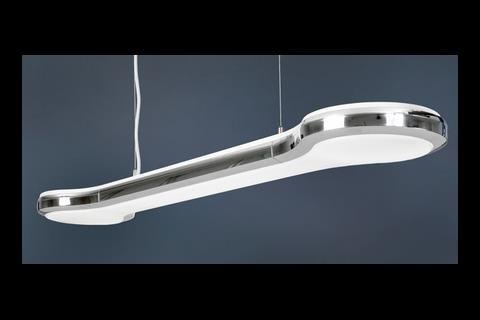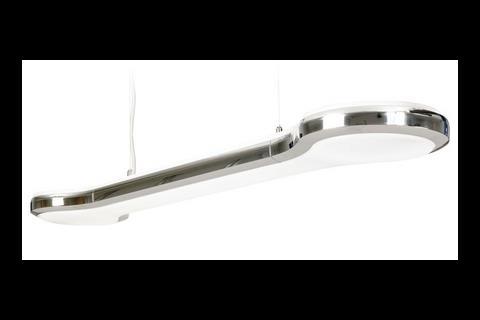Lighting has a critical role to play in the sustainability of our buildings. One Swedish firm, though, hasn’t forgotten the aesthetic side …
Fagerhult Lighting International was set up in Sweden 61 years ago. The firm develops, manufacturers and markets lighting systems for the domestic, commercial, education, retail and leisure sectors. A UK arm was set up 10 years ago and two years ago it acquired Whitecroft Lighting. Fagerhult now has manufacturing facilities in Sweden, the UK and China and as a group has a turnover of about £2m a year, with 60% of sales outside of Sweden. It employs 1,800 people worldwide. Jo Harding, Fagerhult’s marketing director, gives an insight into the firm’s product development.
Which sectors are busy at the moment?
Retail is growing a lot – the biggest markets for us are Sweden, the UK and France. We’re also finding that education, healthcare and leisure are busy. The outdoor sector – things like floodlighting, for the exterior of buildings, and bollard lighting – isn’t quite as busy and that’s due in part to our product range still being developed in this area. It’s a very competitive market.
Which products are most popular?
Product lifecycles vary, some go out of fashion quicker than others. One of the ones that seems to have appealed for quite a while is our Loop Light range. It uses T5 lamp technology and has a slim, aero design that appeals to architects and performs well as a direct and indirect pendant solution.
Who designs your products?
A lot of our products have a very crisp Scandinavian design. We have an in-house team of designers but we also use architects and industrial designers, where we give them a brief for a product and choose the best solution depending on the application.
It may be we are looking for something different design-wise. A recent example is Open Box, which was designed by a Swedish industrial design company. They wanted to move away from the perception of the luminaire being an enclosed box hanging from the ceiling. A series of small perforations allow the inside of the luminaire to be illuminated. It uses standard T5 lamp technology for both direct and indirect lighting and can be used in commercial and retail environments.
What are the lead times on products?
We hold a lot of the popular products in stock, which have lead times of three to four days. On other products it is four to six weeks. If it is a bespoke solution we would estimate anywhere between one and three months for the design stage. Once the design has been finalised delivery usually takes about eight weeks.
What factors are having the biggest impact on product development?
Within Europe energy is having probably the biggest influence. Increasingly the retail sector is asking for energy-efficient products, partly because of the demands of Building Regulations but also because they are trying to save operating costs. This covers more efficient lamps, louvre and reflector technology and control systems.
Even in retail applications, being able to use natural light instead of artificial light is important, and using control systems to offset levels of light to optimise the use of daylight is now increasingly being looked at.
The introduction of regulations, such as the EU Energy Performance Directive, is also influencing our product development.
What recent projects have you done?
We’ve recently done a store for the Cheap Monday fashion clothing brand in Sweden.
It was a difficult brief because they wanted large contrasts in the lighting in the shop, but there weren’t many vertical surfaces to reflect the light off and they also wanted to avoid glare, which is often a problem with retail lighting. We installed spotlights with honeycomb louvres using a series of 35W and 70W metal halides lamps, above a perforated false ceiling. This provided almost totally glare-free lighting and obscured any direct view of the spotlights.
What are the future trends?
In the retail sector LEDs are the biggest development, partly because of their energy efficiency but also because of their fast development: things like colour rendering are improving rapidly which has traditionally been quite poor. The output is also improving and they can be used in areas where other products can’t, such as stairs and shelf units so they have more versatility from a design point of view.
Topics
Specifier 23 May 2008
- 1
- 2
- 3
- 4
- 5
- 6
- 7
- 8
- 9
- 10
- 11
 Currently reading
Currently readingSweden's leading light
- 12
- 13
- 14



































No comments yet